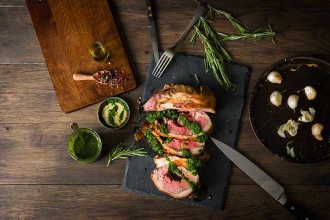18 essential Indian ingredients
August 2, 2024Cooking different cuisines really is a matter of putting together a few key elements. To help you master the perfect curry, here are 18 essential ingredients and spiced for cooking authentic Indian cuisine.
Print this out, hang it up in your pantry and you’ve got the lineup for any classic Indian dish. Just add a few in-season veggies, your favourite protein, and your kitchen will soon be filled with the delightful aromas of traditional homemade curry.

Cloves
As an ingredient most of us are familiar with, cloves add a heady, fragrant hit of aromatics and an almost sweet counterpoint to the savoury of many Indian dishes.
Lentils
Lentils have been part of human diets since the aceramic Neolithic period. Aceramic literally means before pottery, so we’ve been enjoying lentils since before we had bowls to enjoy them in!
They’re very rich in protein (second only to soybeans out of any legume) and dietary fibre. Lentils are also versatile and delicious, which is why they’re so often in your HelloFresh meals. They’re filling and tasty and add a beautiful silkiness to soups and, of course, dahls —a favourite Indian dish.
Black sesame seeds
Nutty and crunchy, need we say more?
Fenugreek
This is one you may not have heard of before. Popular in Afghanistan, Pakistan, India, Iran, Nepal, Bangladesh, Argentina, Egypt, France, Spain, Turkey, Morocco and India, fenugreek is an annual crop of plant that produces amber yellow seeds. It’s flavour is undeniably Indian!
Coriander seeds
More mellow than the fresh herb variety, coriander seeds add a pungency that carries through to hold its own among even the fiercest of chillis.
Chickpeas
Chickpeas are from the same family as fenugreek, and they are an essential legume to many cultures around the world. They’re fabulously dense in nutrients and rich in protein, as well as high in dietary fibre, folate and iron. Kept whole and firm, they add tasty bulk to all manner of vegetarian dishes, and when cooked until they break down, their creaminess is delectable as well.
Tamarind
Tamarind provides a hit of umami (the pleasant savoury taste found in tomatoes, soy sauce and miso pasta) to curries and dahls. However, it also has a beautiful, almost caramel-like hint of sweetness. It’s that duality that makes it so delicious.
Garlic
If you’re not starting your savoury meals with a clove of garlic, you’re missing out on a depth of flavour.
Onion
Onion is second in necessity only to garlic.
Cardamom
Cardamom and saffron are beloved Indian spices. Cardamom has a spicy and citrusy aroma, which is perfect in Indian dishes, both sweet and savoury.
Saffron
Renowned for its rarity (each red saffron stigma is harvested from flowers that produce only three apiece), just one frond of saffron transforms white rice into a blissful sunflower yellow. Indian cooking just wouldn’t be the same without its distinctive colour.
Palm sugar
Palm sugar adds depth of flavour as well as sweetness. Like using dates instead of sugar in a dessert, the rich, deep flavour is delightful!
Mustard seeds
A pungent heat emerges from the addition of mustard seeds in South Asian cuisine. Perfect for adding spiciness that isn’t devoid of flavour.
Cinnamon
Woody, sweet and aromatic, cinnamon, originating in Sri Lanka, quickly established itself as a key ingredient in various national cuisines, including Indian cuisine.
Curry leaves
It’s no surprise, but worth mentioning that an authentic curry should include curry leaves!
Coconut milk
Perfect for adding a cooling element to a hot and spicy curry, coconut milk also lends a luxurious creaminess to meals, like this coconut beef curry.
Chillies
The big mild chillies, the red ones, the little evil ones, the wild-looking green ones – there’s a chilli pepper out there for every Indian dish imaginable! Fresh chillies create a juicy, zingy hit that tingles on the tongue, while the dried variety acts more like a baseline, humming along under other flavours with heat.
Rice flour
Rice flour is gluten-free (those afflicted by dietary restrictions rejoice!) and provides amazing textures for dough-based sides, like dosa or roti.

All food products vary. The instructions printed on the food packaging always supersedes those printed in this article and must always be followed.




